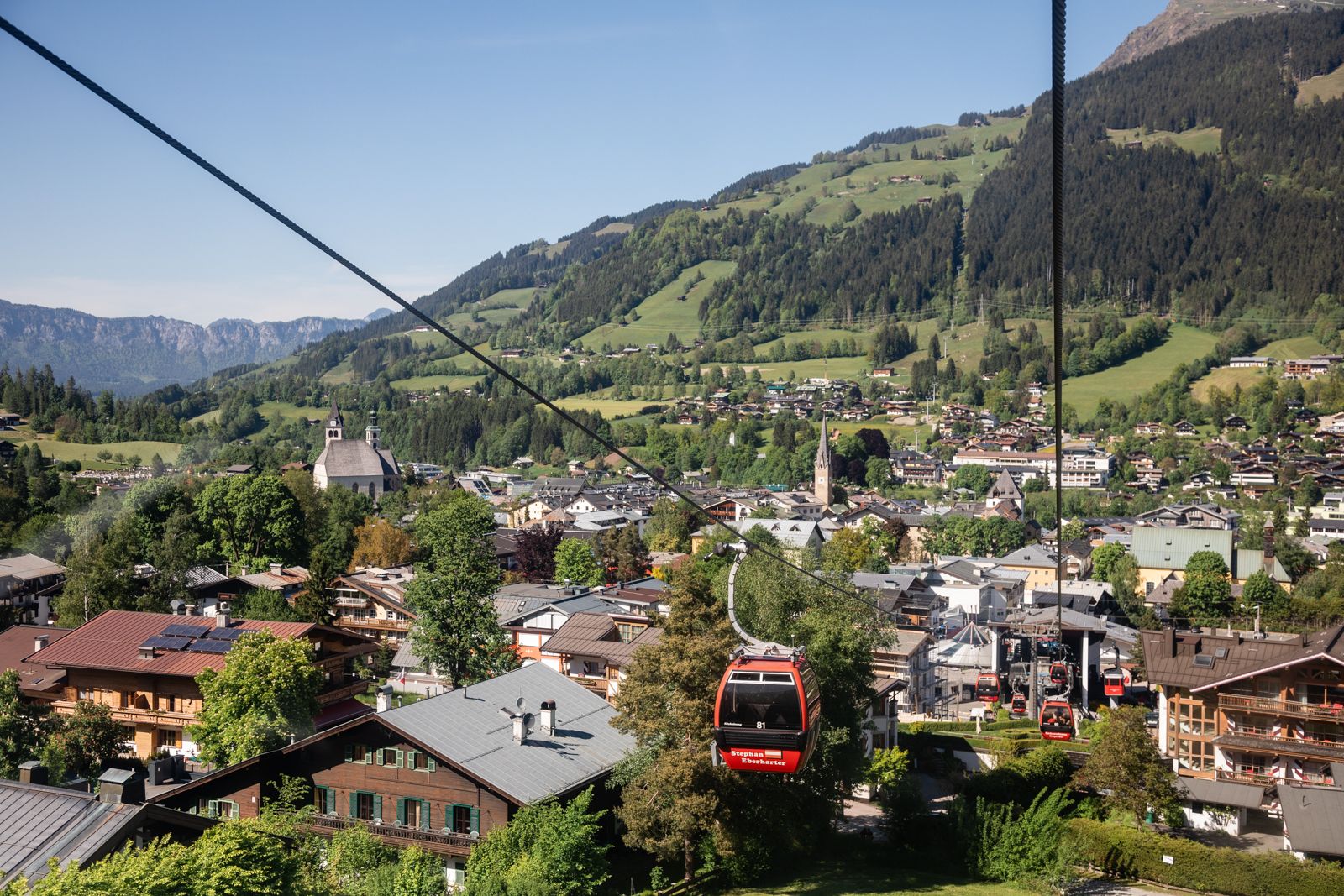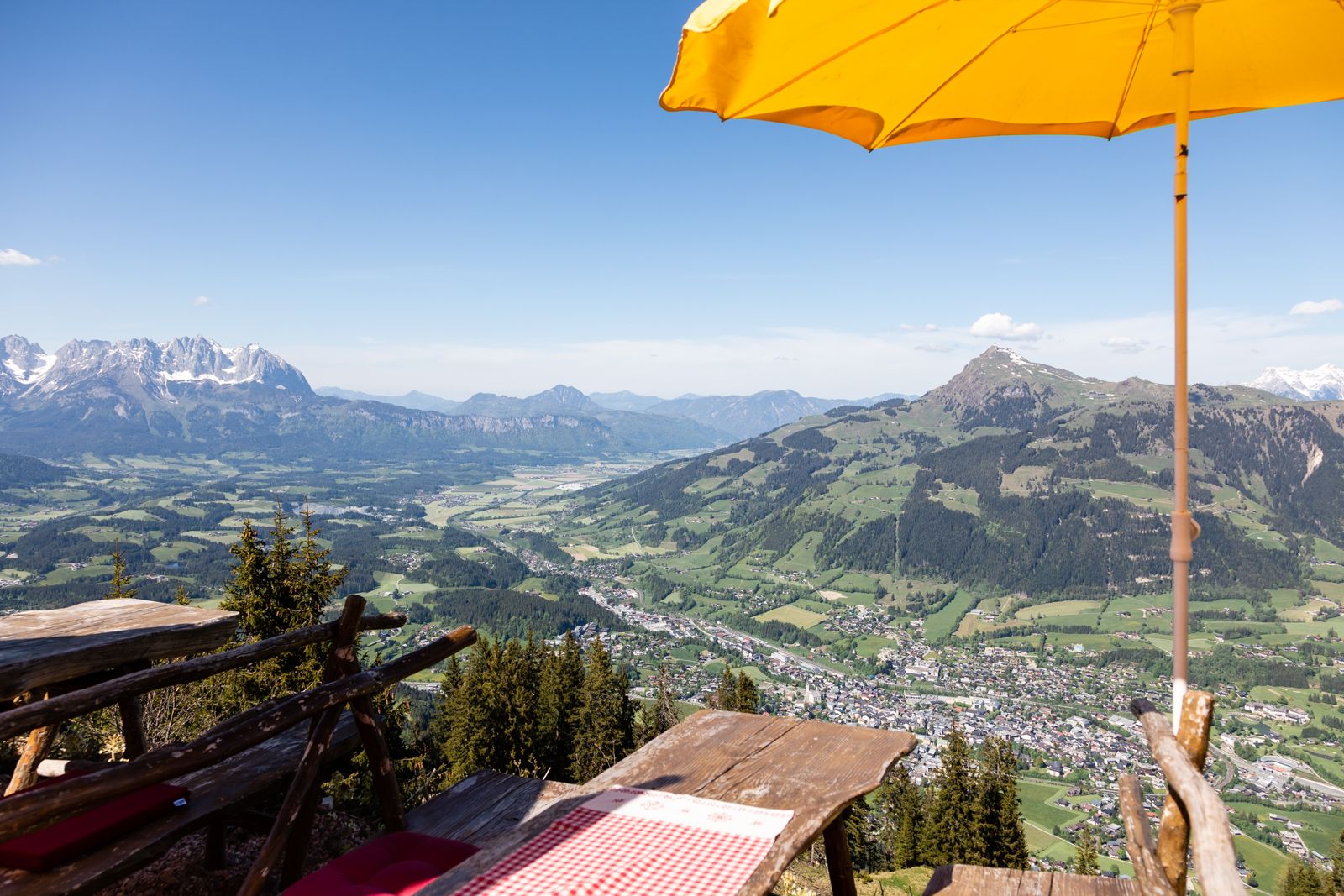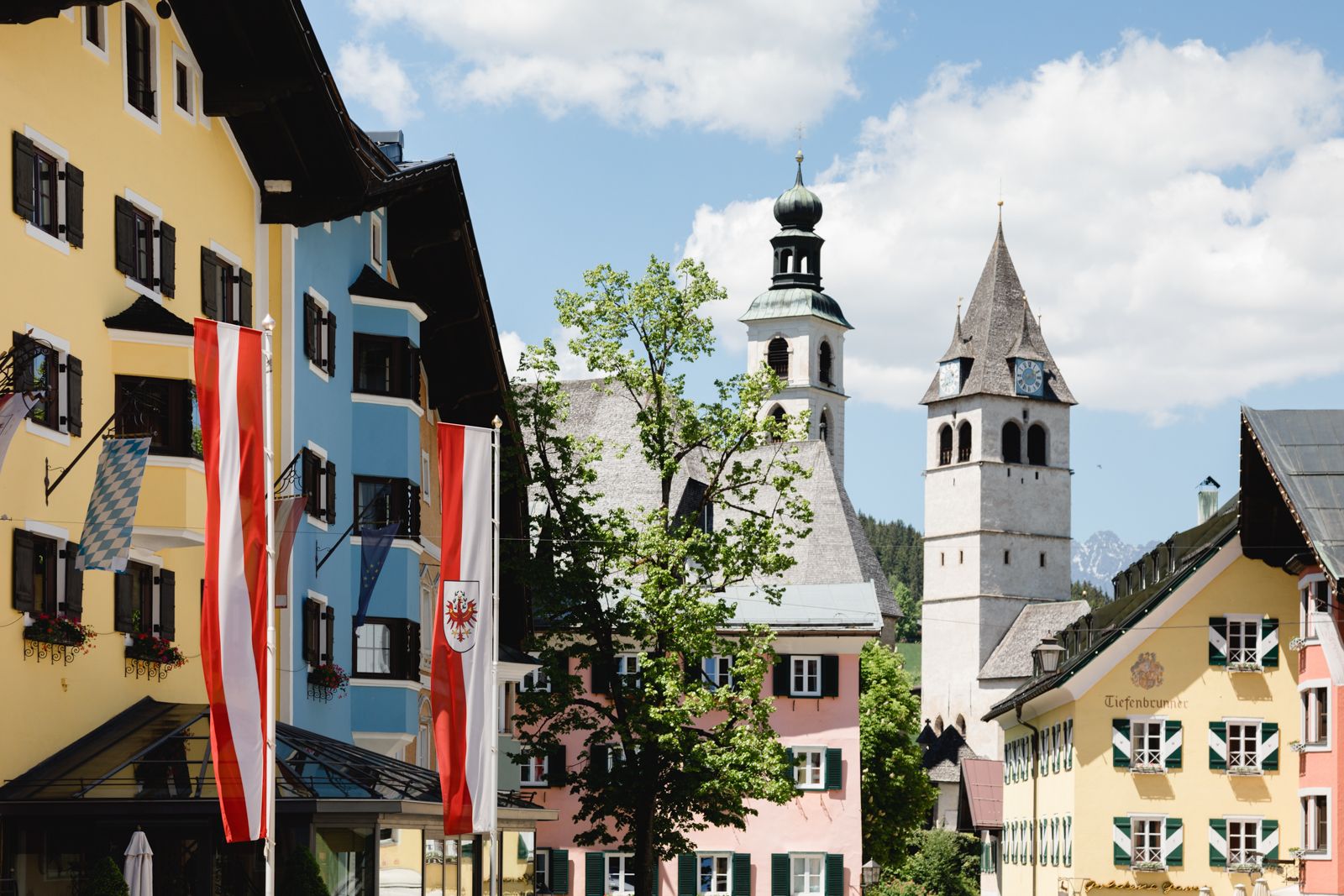
Because Kitzbühel used to be on the busy trade route from Chiemsee via the Felbertauern to Venice, travellers have always been part of the town. This has not changed to this day: Kitzbühel is a sports and lifestyle metropolis and attracts visitors from all over the world. "First-time visitors don't feel the need to rush out of town straight away, but want to stay for a while. It was like that 100 years ago, people were already strolling around here back then," says Pepi Treichl. The 70-year-old is a Kitzbühel veteran and city guide. On his tours of the town, he explains why mining, art and an old prison in the centre of town are just as much a part of Kitzbühel as the Streif.
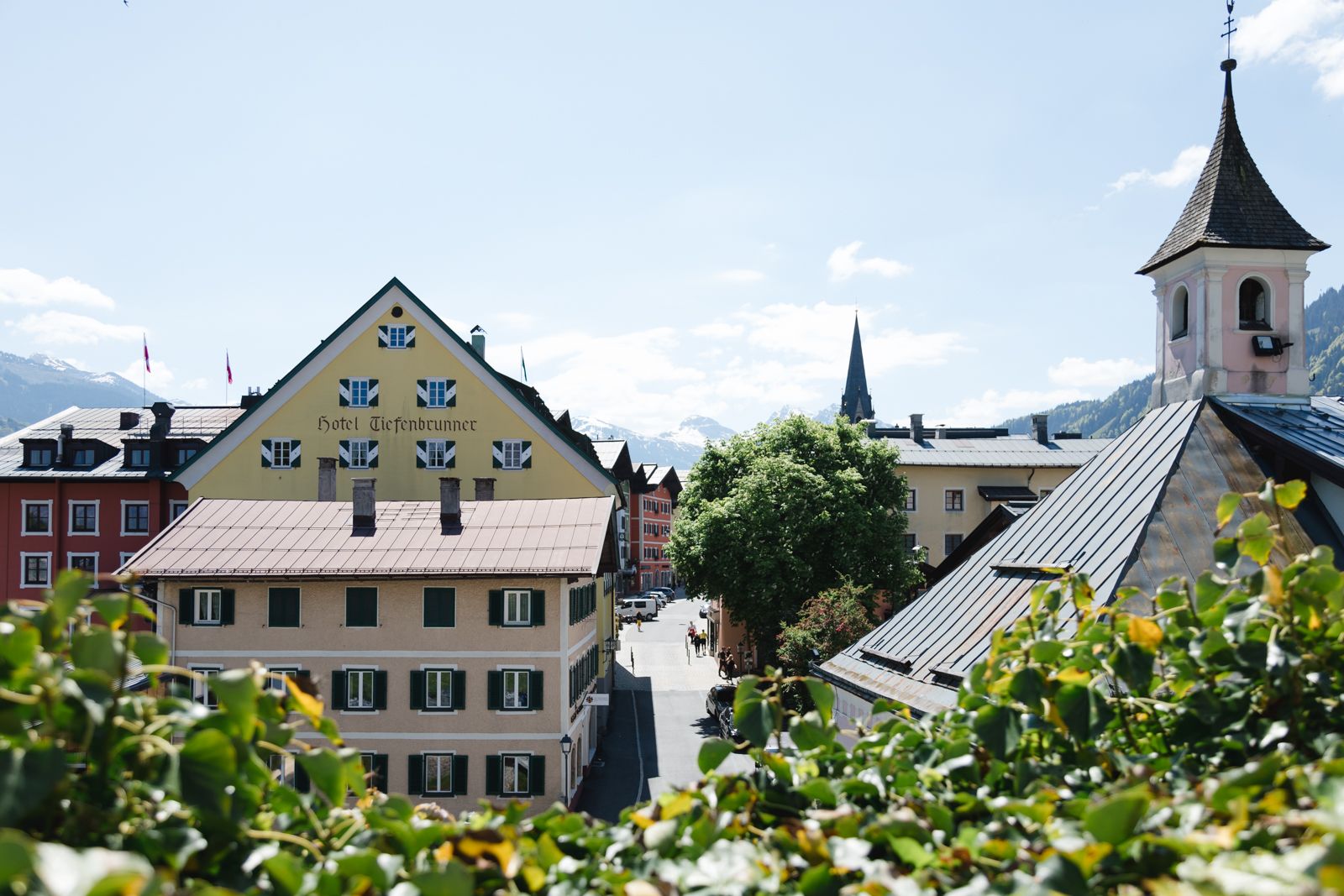
Kitzbühel was granted town charter more than 750 years ago. Since 1271, the once small settlement has developed into a metropolis of winter sports and lifestyle. "Everything that characterises Kitzbühel today is connected to the past," says Pepi Treichl. For a long time, the Gamsstadt was not a Tyrolean town at all: just like Rattenberg or Kufstein, Kitzbühel belonged to Bavaria until 1504 and was a border town.
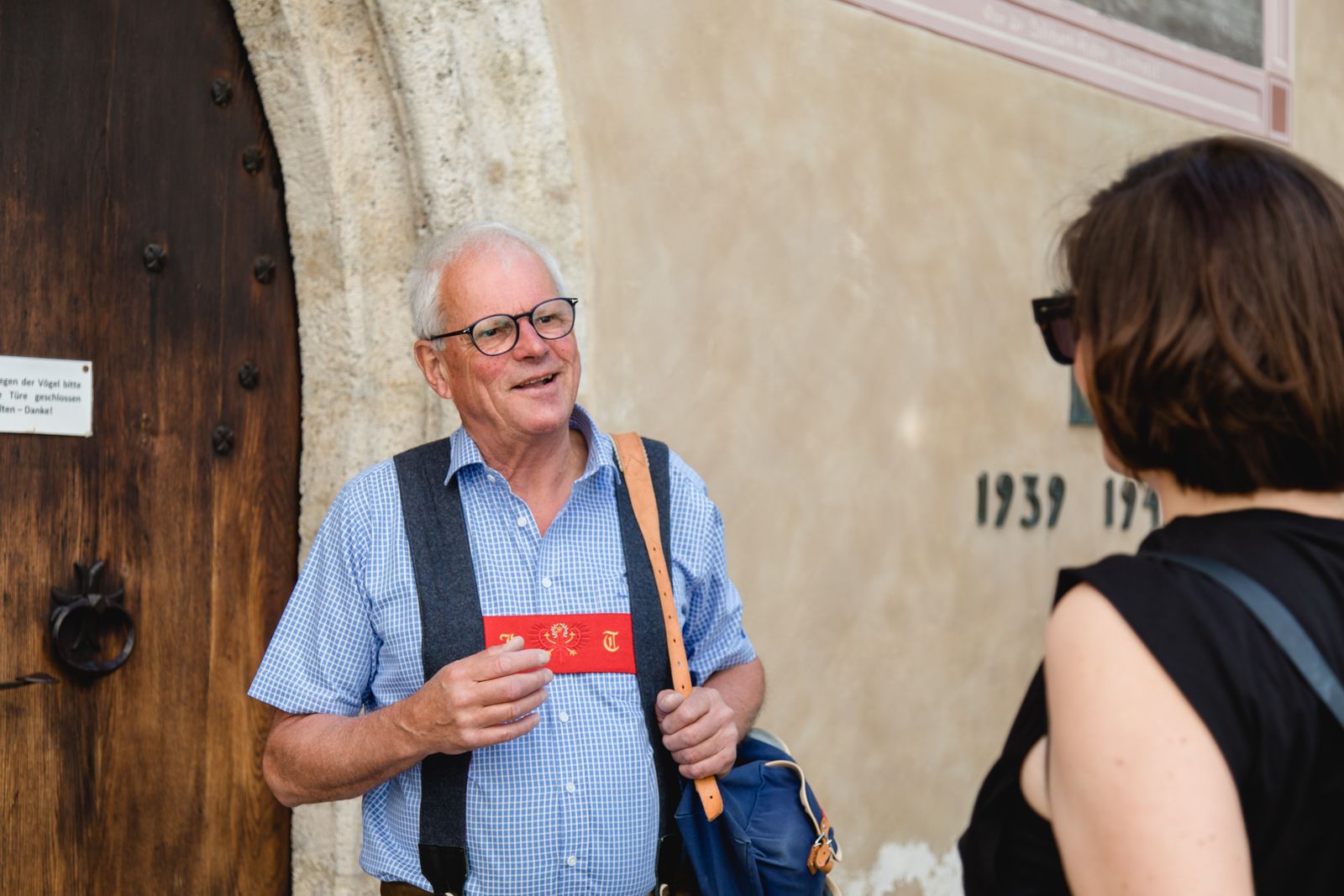
Tourism has a long tradition in the Gamsstadt, as the time-honoured Gasthof Goldener Greif (now Hotel Goldener Greif), which was first mentioned in 1270, shows. Where it now says 'Hotel' was actually the stables. People came with their carriages and stayed in the same house as their animals. Another special feature: food used to be stored under the gate at the very top under the gable. Liquor, wine and beer were in the cellar, but food had to be brought under the roof. It was dry there and the wind could whistle through the shingles. The food was pulled up over a beam. If you look closely, you can still see gates and beams in many historic townhouses in Kitzbühel's old town today. Today, Kitzbühel is admittedly more known for its sophisticated flair, but it is exciting to see where the origins lie.
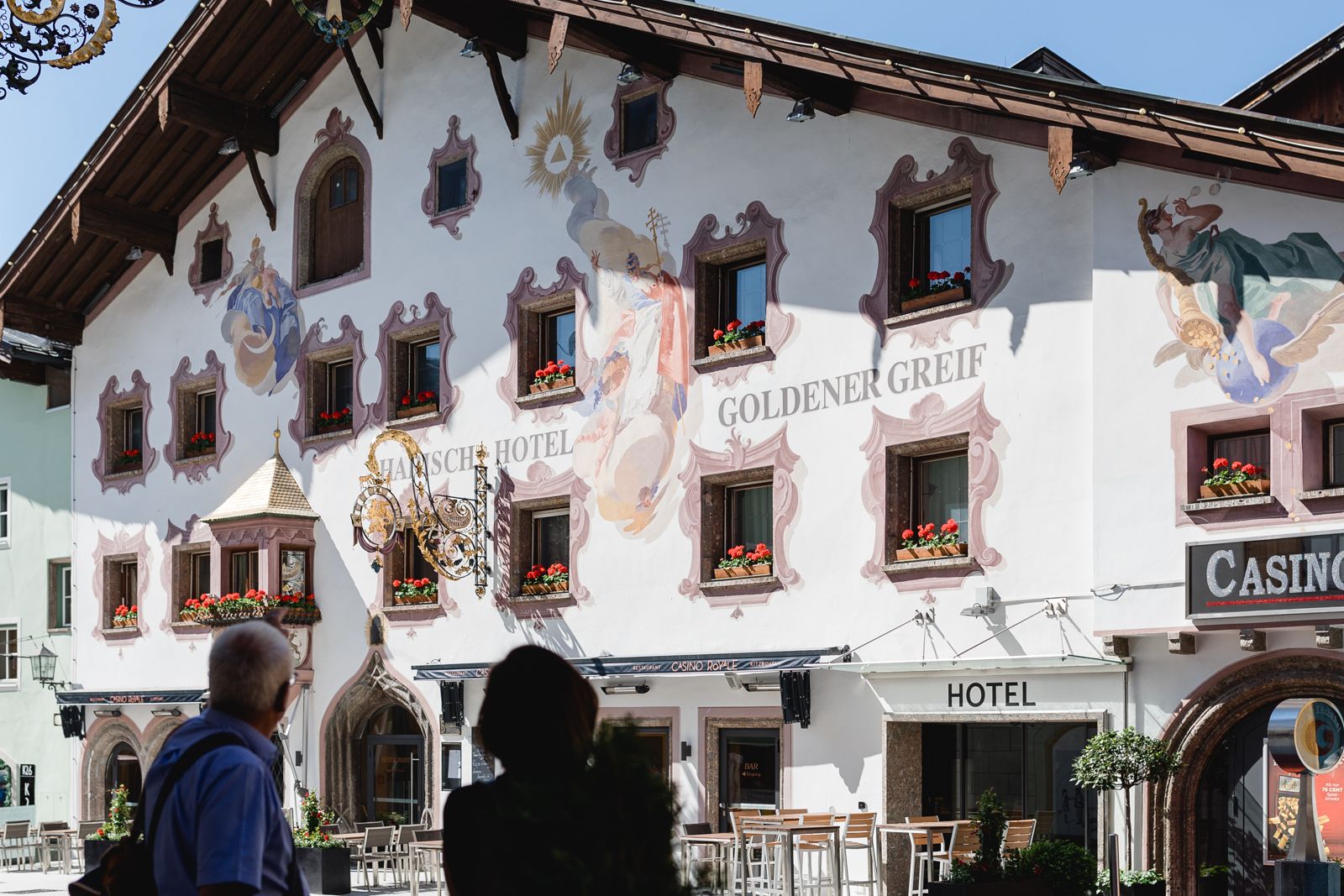
Franz Reisch is also partly responsible for Kitzbühel's worldwide fame. His picture can be admired at Kitzbühel town hall. The hotel and ski pioneer was far ahead of his time and drove the rise of Kitzbühel as a tourist destination. As early as 1893, he began organising high-alpine ski runs, founded the Kitzbühel Winter Sports Association (now the Ski Club) in 1902 and opened what would later become the Grand Hotel Kitzbühel in 1903. As early as 1908, he also published a book with all the mountains in the region. He was a pioneer in tourism.
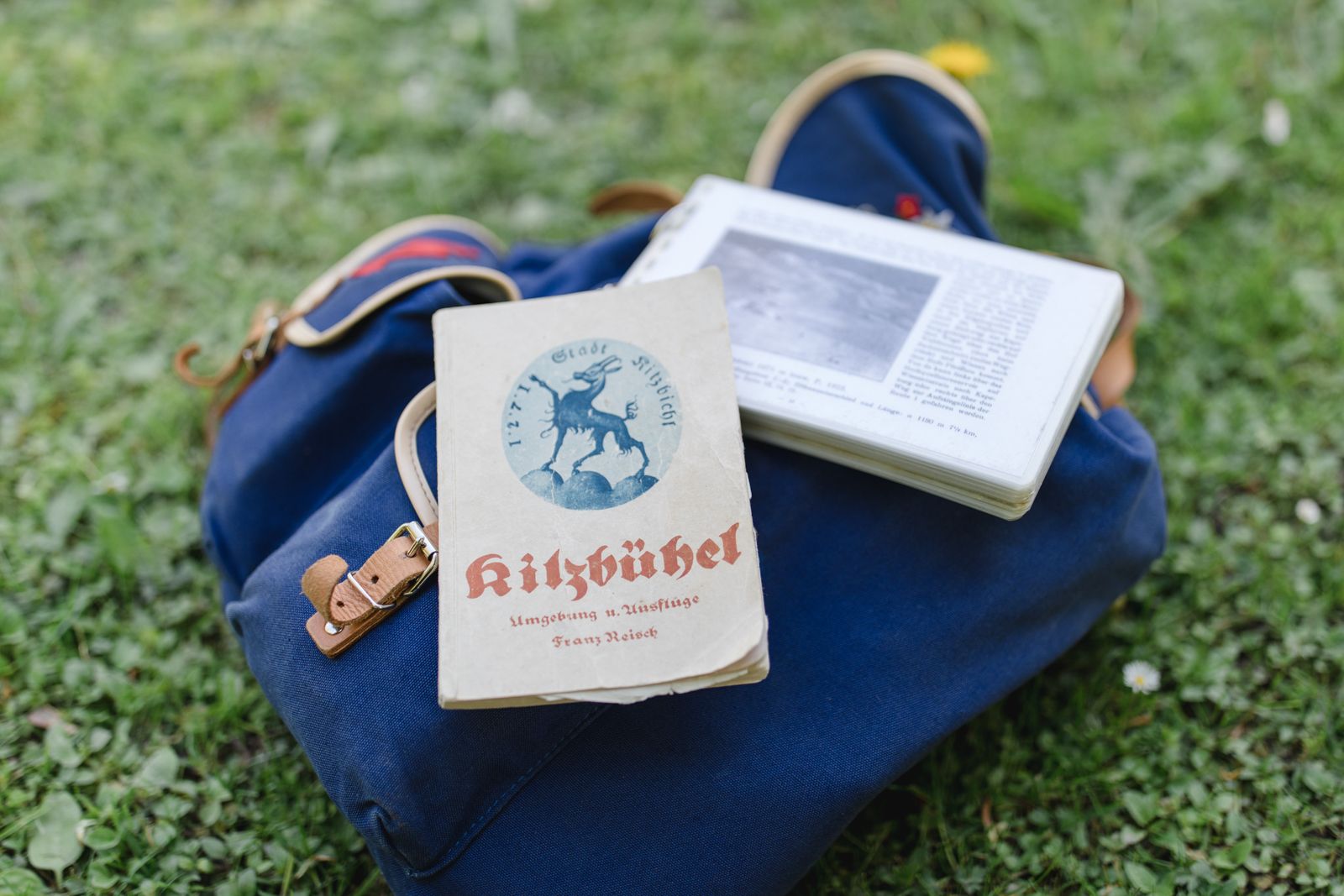
The oldest part of the town is formed by the town wall with the Jochberg Gate and the Pfleghof. A castle with a residential wing and watchtower stood here as early as 1120. All that remains of the former Kitzbühel castle today is the five-storey Pfleghof tower. The Jochberger Tor is the entrance to the historic old town, from here you have a view of the entire "promenade" for the first time. At the other end of the old town, the two towers of the Church of Our Lady and St Andrew's Church greet you, and behind them you can even see the Wilder Kaiser.
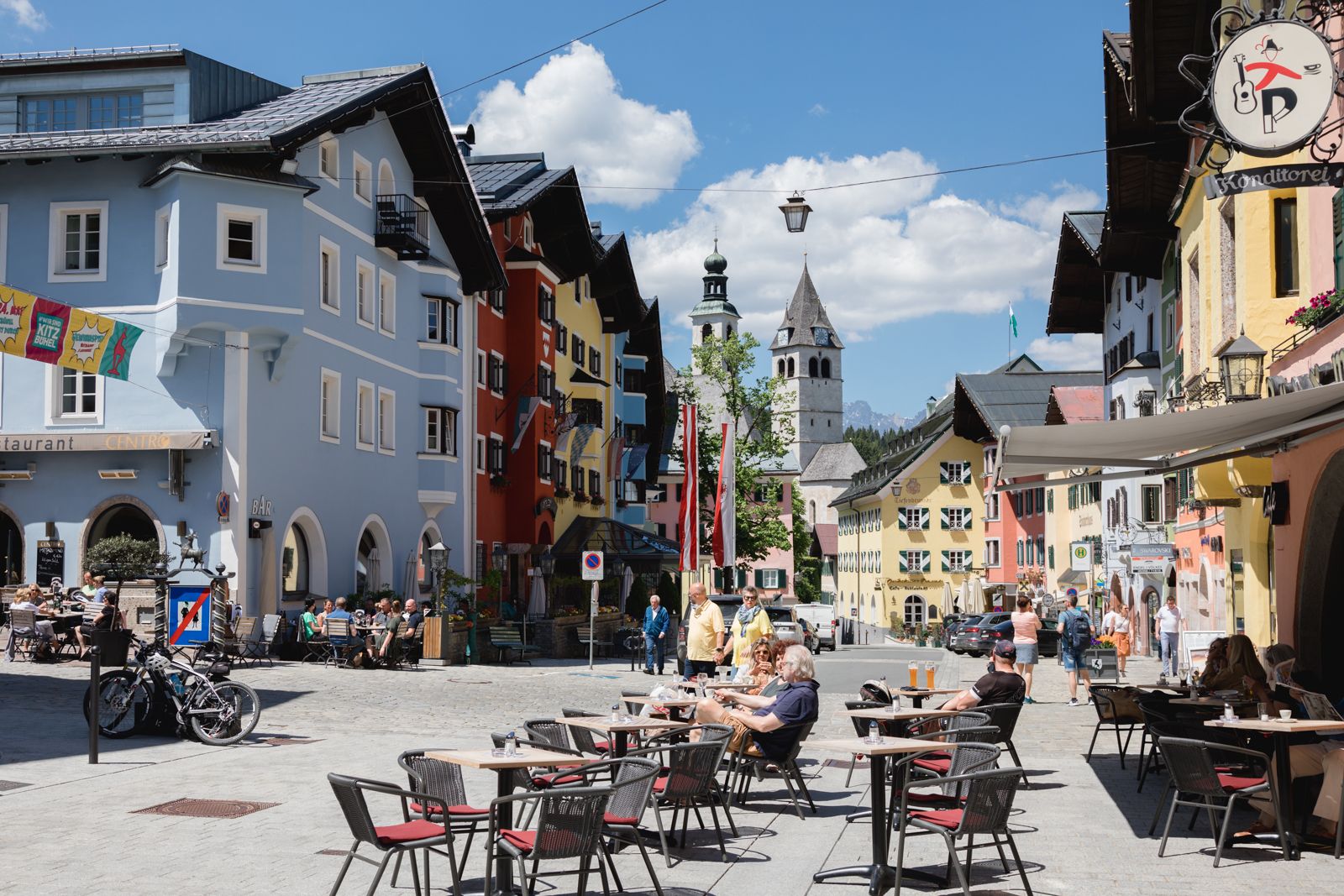
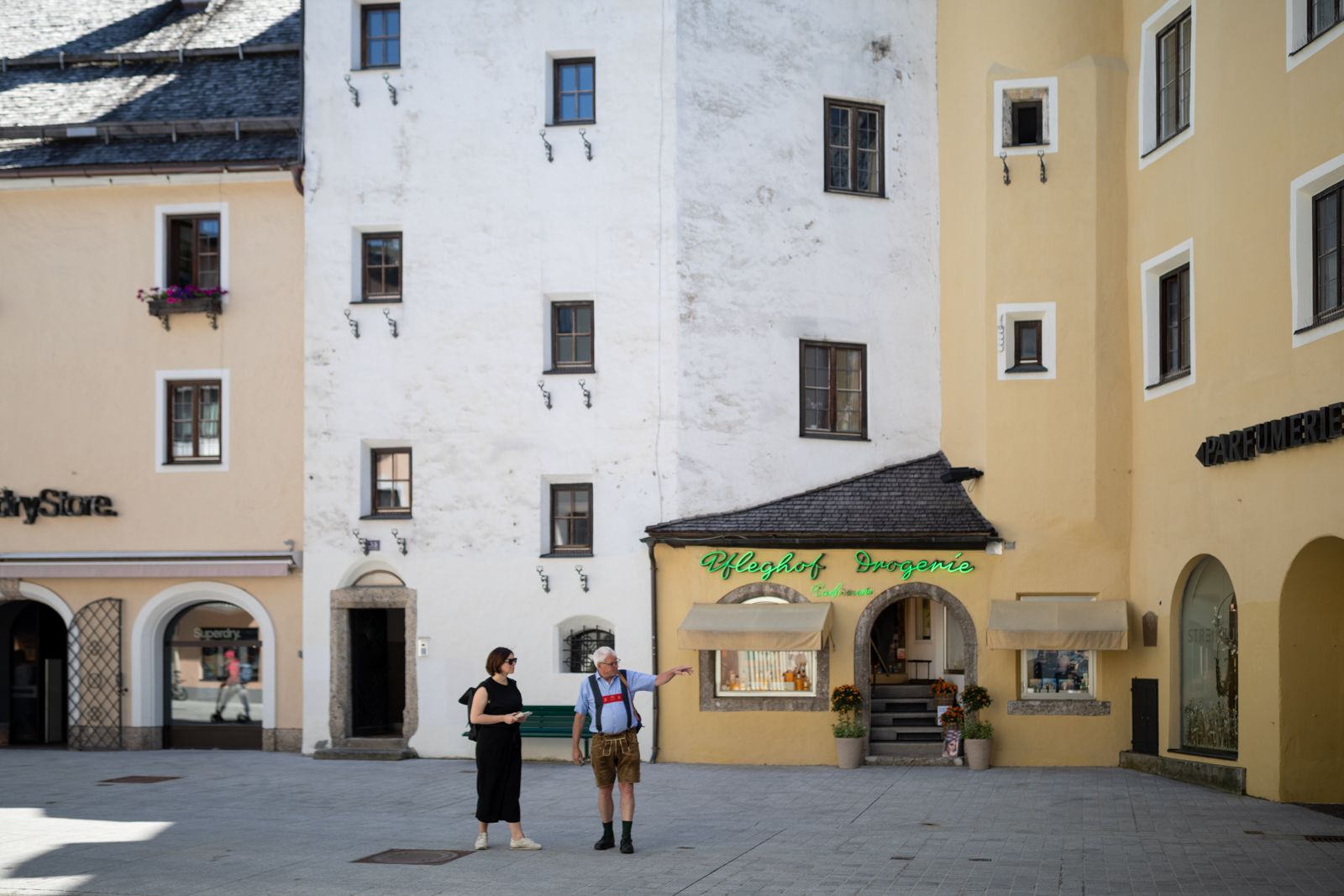
Kitzbühel has always been a centre of attraction for great talents. Between 1600 and 1800, Kitzbühel had its own art scene. The Faistenberger family were among the sculptors, painters and composers who lived in the town: they lived in Kitzbühel for four generations and left their mark on the town with their works. This influence can be seen in the St Andrew's Church, the Liebfrauenkirche and even in the town centre: the image of a copperplate engraving by Andreas Faistenberger adorns the wall of the Bezirkshauptmannschaft, the town's central office building.
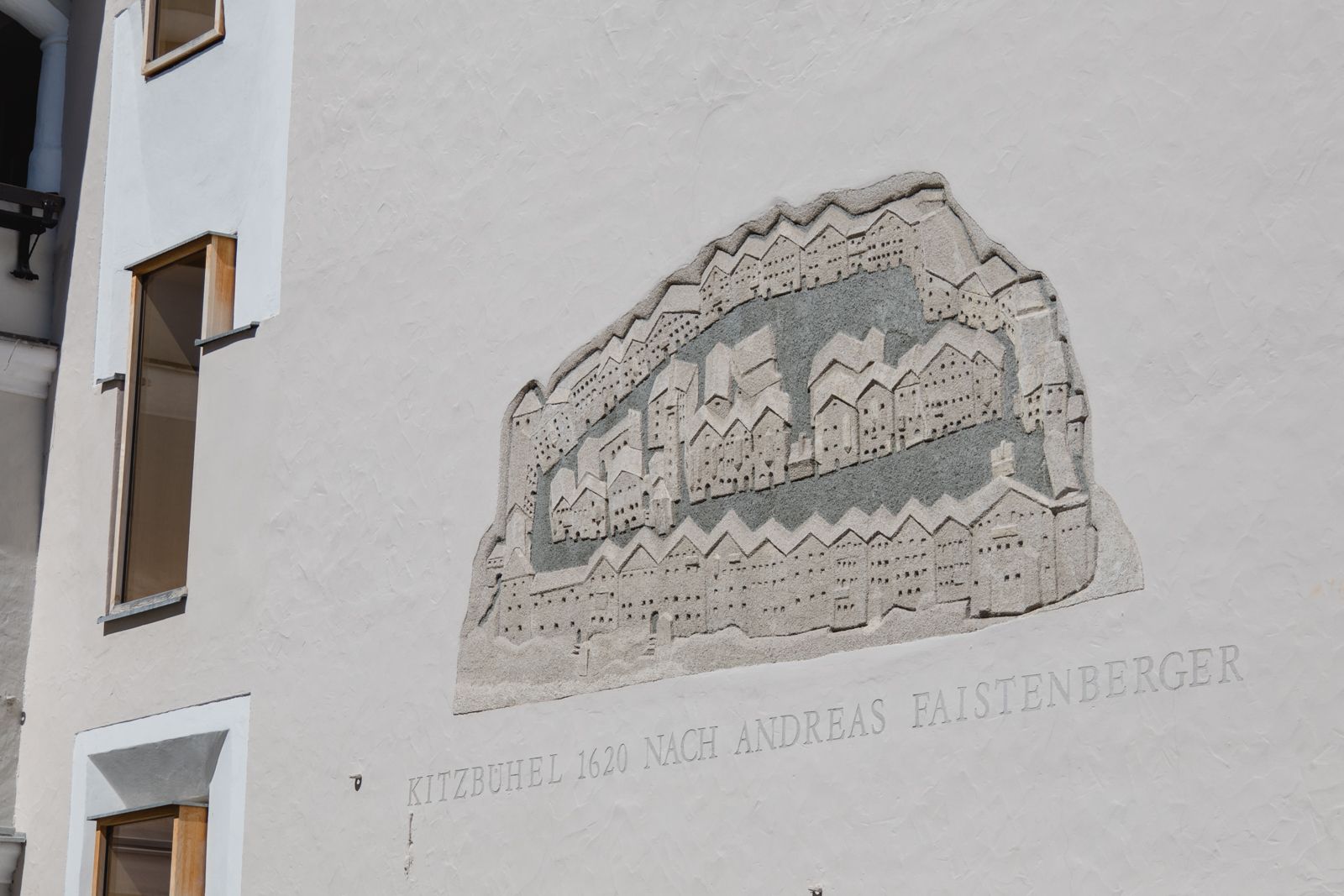
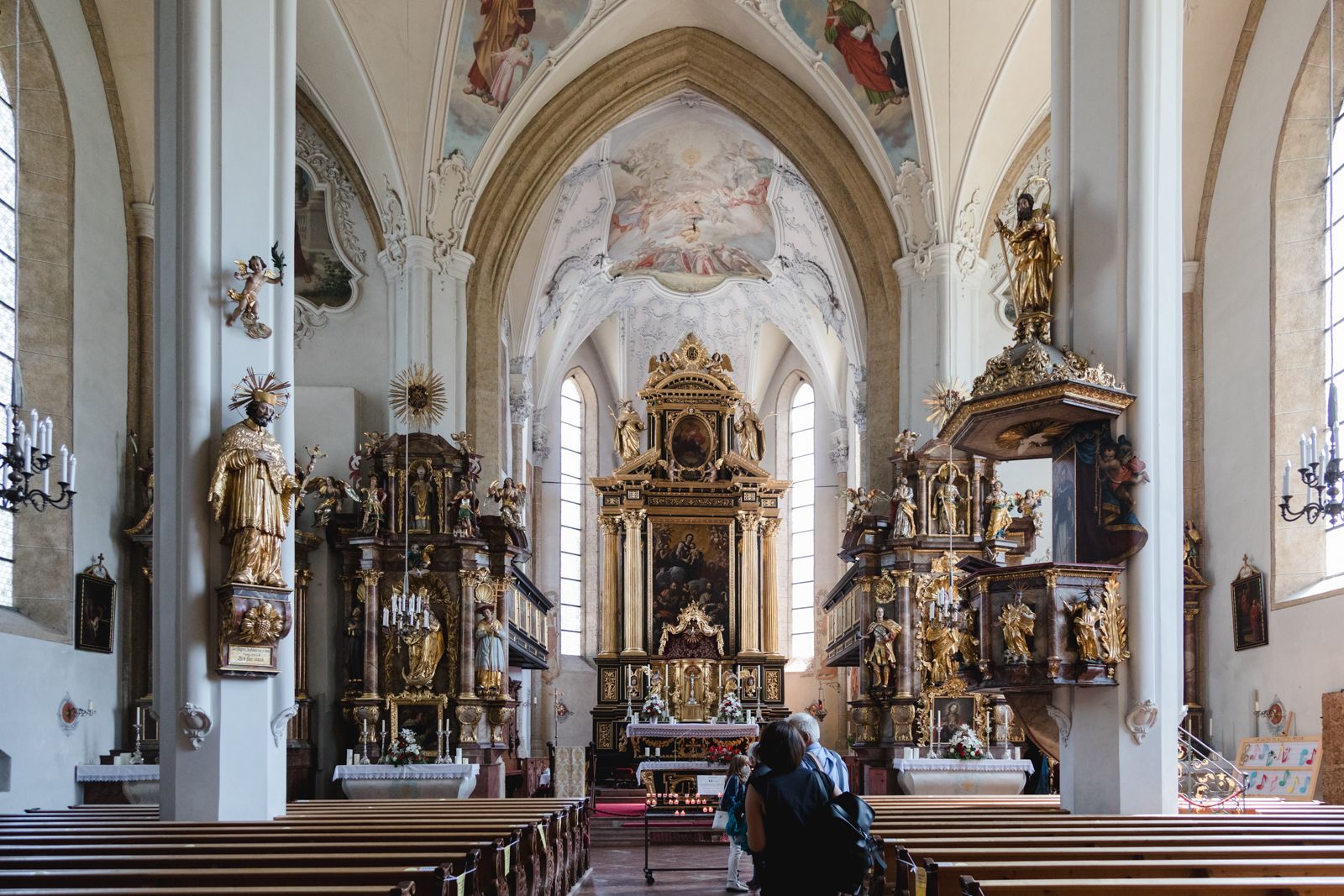

Before leaving the old town centre via the former Spitaltor gate towards the churches, you will see the "Salvenmoser Hochalm", an inconspicuous building where the Kitzbühel Ski Club now has its offices. This used to be the town prison. Because the shop next to it was called Salvenmoser, the prison was called "Salvenmoser Hochalm" by the locals. To the uninitiated, this sounded more like a holiday, but the locals knew what they were talking about.
A detour to the Kitzbühel Museum is also a must when visiting the town: not only is the history of the town on display here, but above all a tribute is paid to the works of Alfons Walde. The Kitzbühel painter has had a lasting impact on the image of Kitzbühel with his works. More than 60 paintings and 100 prints are on display in the museum.

The fact that Kitzbühel was able to develop so strongly early on and still boasts unspoilt beauty today is largely due to mining. This had a long tradition in the region. Copper ore was mined around Kitzbühel as early as the time of the Celts 3000 years ago. The town experienced a real boom in the 16th century when silver deposits were discovered in the region. Kilometres of shafts were also dug into the famous Hahnenkamm to search for silver. Today, luck lies on the piste, in the past it was underneath. Incidentally, the Hahnenkamm race characterises the town all year round. You have a good view of the "Streif" from the Legends Park.
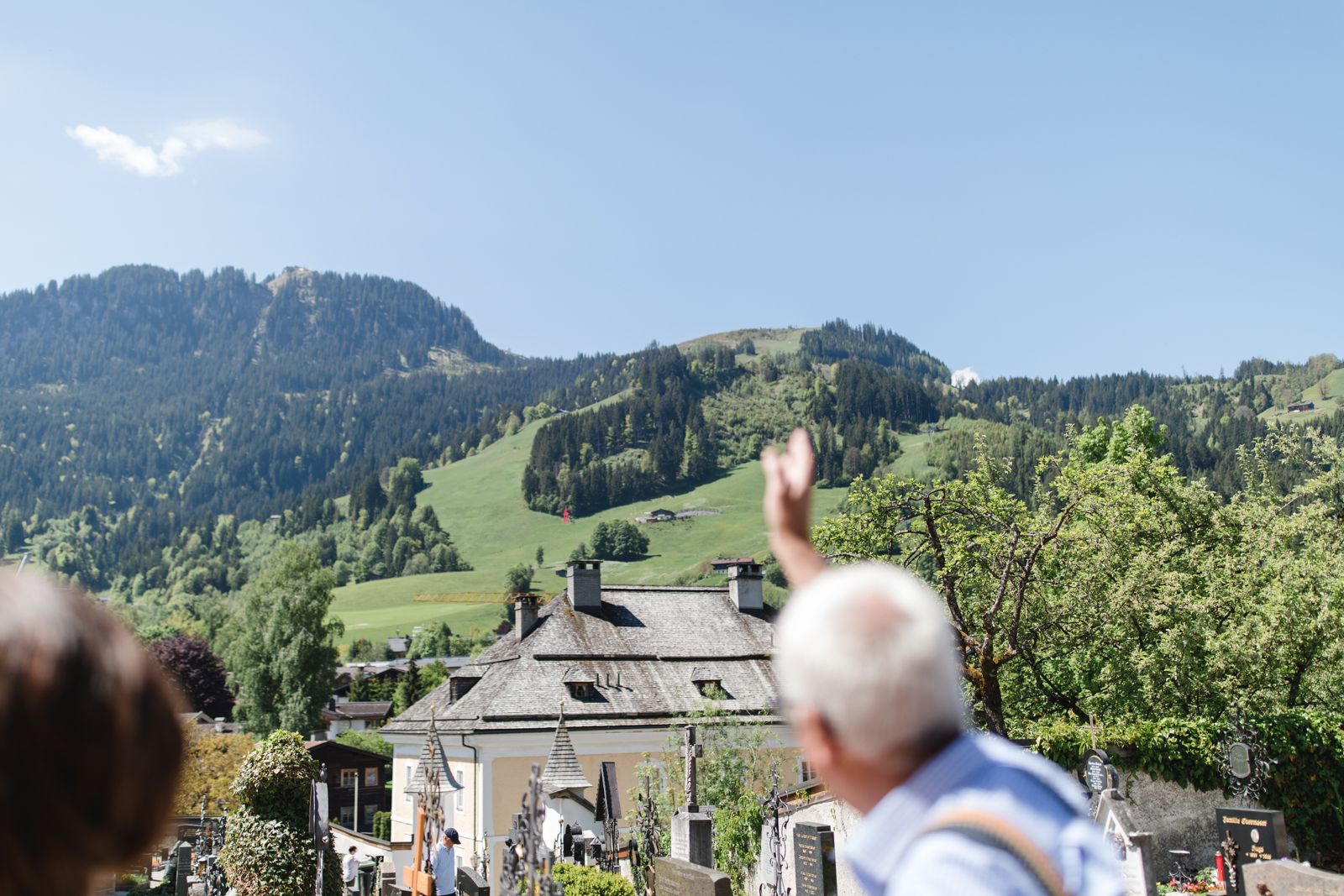
After a long walk through the city, you can stop for a bite to eat in the pedestrian zone. You can soak up the sun at Bastian's Bar & Bakery, for example. The modern café with its own bakery is right in the centre of the action. You can also enjoy an excellent breakfast here.
Directly opposite is the traditional Huber Bräu Stüberl,, a traditional, rustic brewery with down-to-earth cuisine. Huber Bräu, a regional beer from neighbouring St. Johann, is also served here. A good tip for anyone who wants to try some tasty goulash and dumplings.
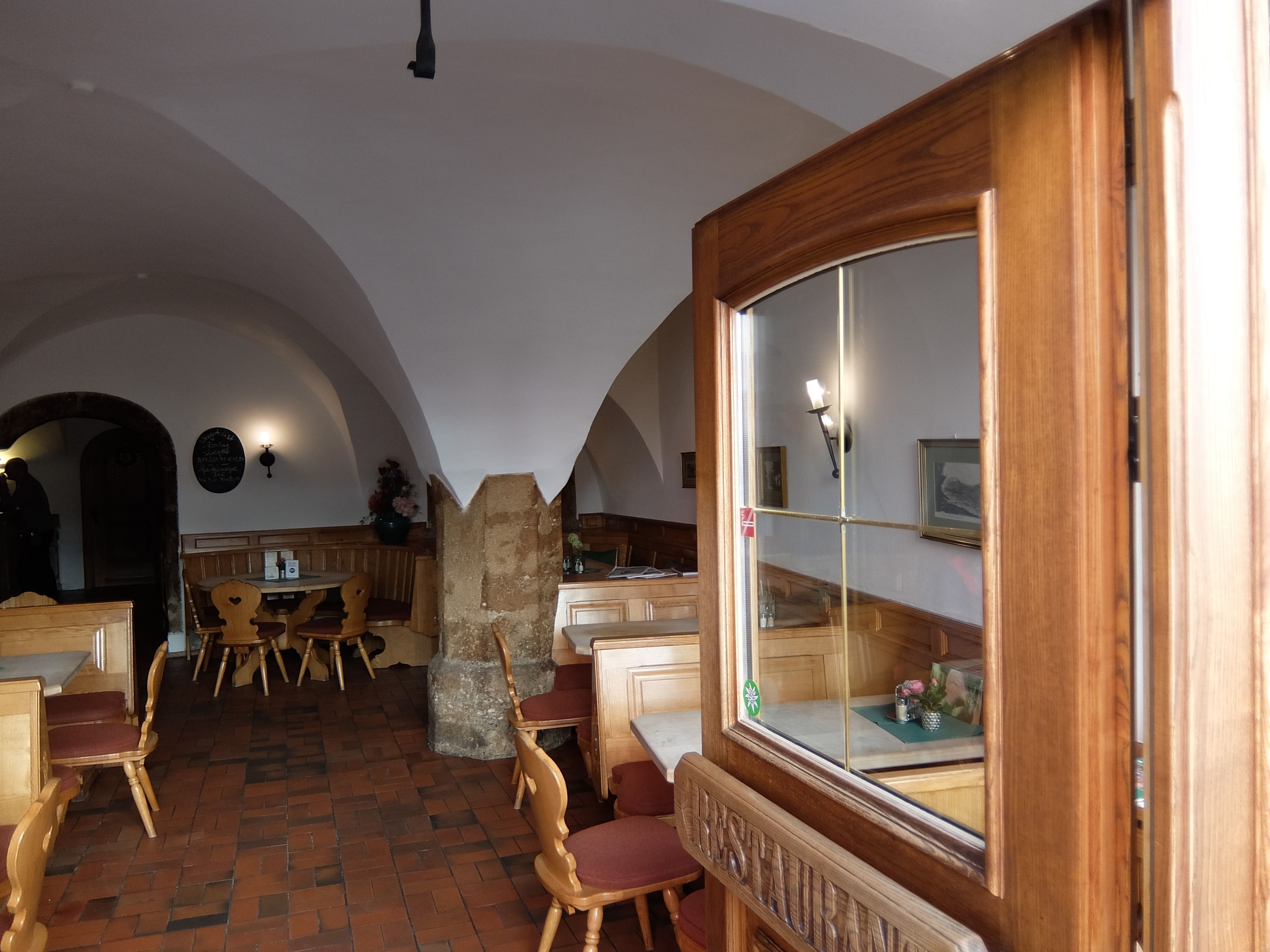
There is also a real confectionery classic in the old town, which is also popular with the locals: Café Praxmair, also ideal for a cake and coffee stop.
Two special gourmet addresses can be found just outside the old town walls: Restaurant Lois Stern and Restaurant Neuwirt. Lois Stern in Josef-Pirchl-Straße 3, which has been awarded two Gault Millau toques, has been an institution in Kitzbühel for more than two decades and focuses on (cosmopolitan) openness - in the truest sense of the word. Not only are the dishes inspired by the Asian region, they also cook in an open show kitchen.
Contrary to its name, the Neuwirt has a few years under its belt: the restaurant at Florianigasse 15 has been around since 1844. Following a new takeover in 2018 by Martina Feyrsinger and Jürgen Kleinhappel, the restaurant (which has also been recognised by Gault Millau) focuses on regional, almost forgotten ingredients. These are used to conjure up modern, light and healthy energy cuisine alongside classics such as boiled beef and cheese dumplings.
Bichlstraße 22 is also home to "Franz": a lifestyle shop for shoes, clothing and accessories, as well as a coffee and wine bar.

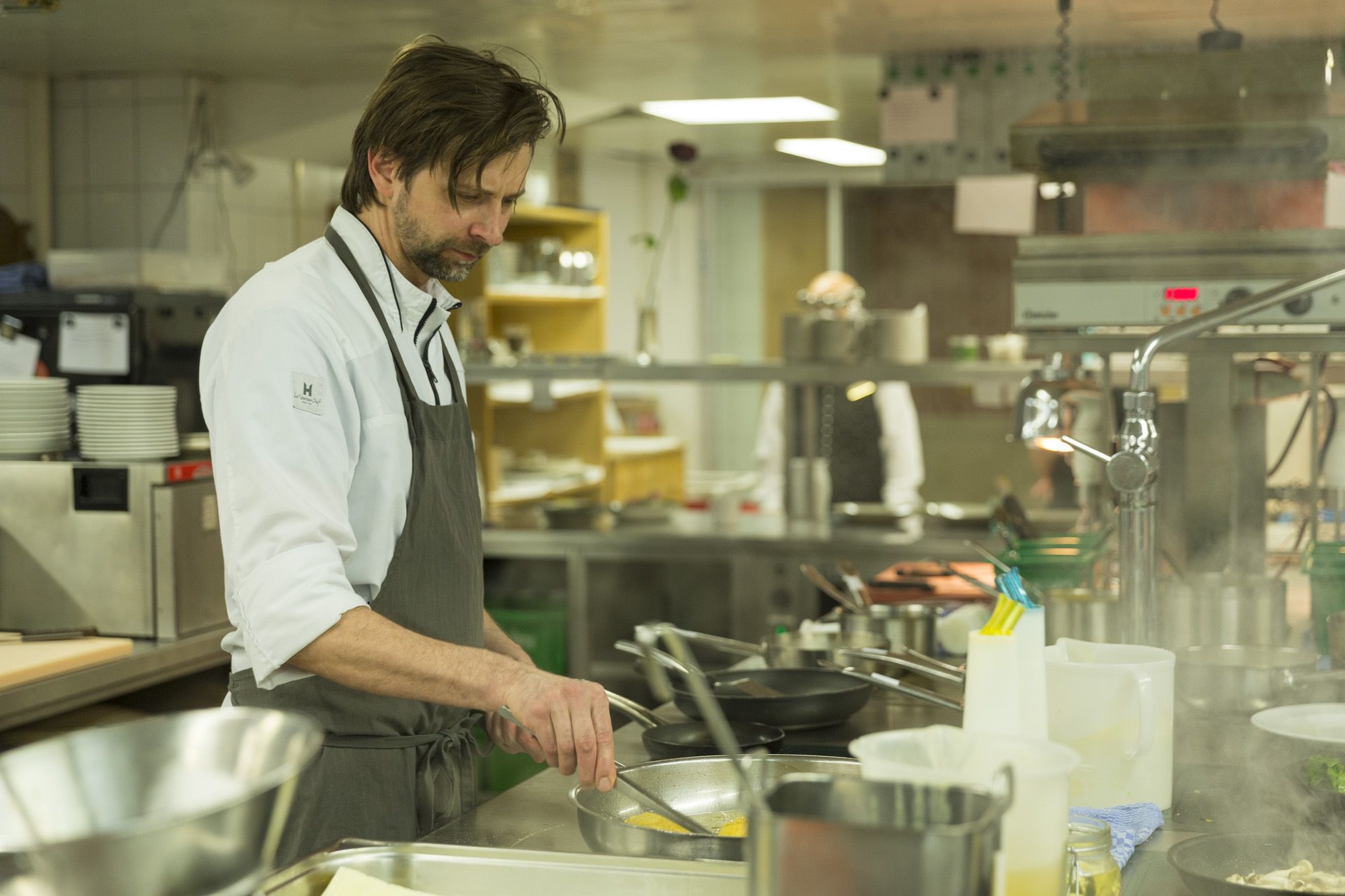
Speaking of shopping - Kitzbühel has a big city flair here, because you don't normally find luxury brands such as Bogner, Aigner or Luis Trenker in small towns. But Kitzbühel is a little different and that is definitely what makes the Gamsstadt so charming.
How about something special like a piece of clothing from women's shoe. The fashion company from Kitzbühel combines the highest quality and best workmanship with timeless design and of course has a store in Kitzbühel (Josef-Herold-Straße 13). Kaspar Frauenschuh said in an interview: "A Frauenschuh jacket can be passed on."
Also Franz Prader is also an ideal example of how to be remembered with elegant style. The famous "Prader trousers" are even reason enough for Hollywood stars to shop here. But the finest cloth from Canali or Brioni is also available at Prader Kitzbühel in Josef-Herold-Straße 15. At Prader, it's not about luxury shopping, but about making a purchase of the very highest quality that will give pleasure for many years to come. Or as Mr Prader puts it: "You'll feel right at home in these trousers."
After culture, sightseeing and shopping, it's time to take the red gondolas of the Hahnenkamm cable car to the top. Once at the top, the Hahnenkamm-Starthaus attracts visitors in summer with a medal exhibition. However, the ride up the Hahnenkamm is worth it for the view alone: from the Wilder Kaiser to the Kitzbüheler Horn, with the Loferer Steinberge and Großglockner beyond. Kitzbühel lies gently nestled between all these mighty giants: An internationally famous town and yet rooted between forest, meadows and peaks.
